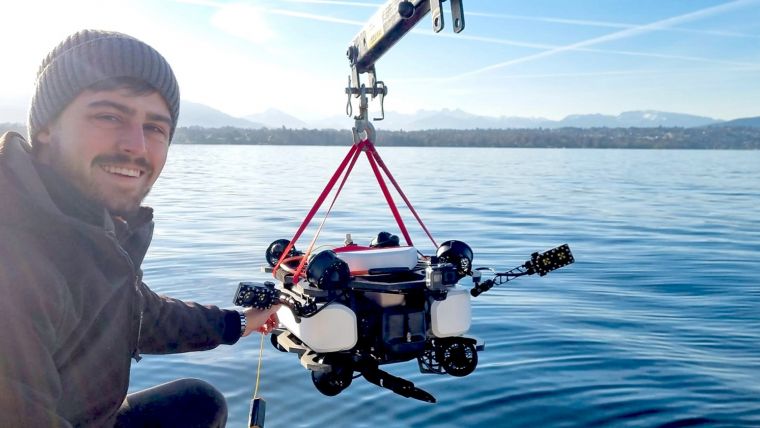Enhancing underwater safety with compact robot technology
Divers can face difficult and dangerous conditions when performing essential underwater inspection, search and maintenance. Now, a new remotely operated vehicle (ROV) from Switzerland’s Tethys Robotics is providing a much safer alternative.
The Nortek DVL is being used to complete the navigation solution for this compact robot, while maintaining navigational accuracy in the most challenging underwater conditions.
There are several technical challenges to operating an underwater robot in a lake or river, or offshore in areas of strong tides. First, the water is often cloudy or murky, making visibility poor, often with leaves and other objects floating or in suspension. Second, the water can be fast-flowing and the bottom can move, with sediment or small stones dragged along by the current.
High-accuracy positioning and inspection in near-zero visibility
Jonas Wüst, CEO at Tethys Robotics, set out to meet these challenges following a student research project at Eidgenössische Technische Hochschule Zürich (ETH Zürich), a renowned public university in Switzerland.
Tethys Robotics’ goal was to build an autonomous underwater robot capable of being deployed in rough water with currents of up to 2m/s. It would need to be capable of high-accuracy positioning and inspection of its immediate environment in near-zero visibility. This required a very accurate underwater navigation solution.
If this can be achieved, it provides immense advantages to operators, as they can focus on controlling the robot relative to the stationary physical surroundings, without having to worry about trying to control it against swirling currents.
To meet these positioning and navigation needs for their ROV, Wüst and his team equipped it with a Nortek DVL that meets their specific requirements for achieving bottom tracking and current measurements in the most difficult conditions, securing navigational accuracy.
The DVL, or Doppler Velocity Log, is an acoustic sensor that estimates velocity in water relative to the bottom, using a long pulse along a minimum of three acoustic beams, each pointing in a different direction.
Bottom tracking for ROVs near a moving riverbed or seafloor
During Tethys Robotics’ first discussions with Nortek, the DVL500 Compact had just been released. This is a 500kHz DVL in a small form factor – a good match for the requirements of the small ROV the team at Tethys Robotics was working on.
The DVL500 Compact represents the latest generation in survey-grade DVL technology. Combining the convenient size of the higher-frequency DVL1000 with the superior bottom-tracking range of traditionally larger 500kHz systems, the DVL500 Compact provides developers of small robotic systems with a reliable, high-performance solution for aiding underwater navigation and control.
“The benefit of the DVL500 Compact for Tethys Robotics was the good penetration of the DVL’s signals through the bottom, river or lakebed,” explained Nortek’s Cristobal Molina, the senior sales engineer working on the project.
Their work with the underwater robot has attracted a lot of attention. “Tethys Robotics is an invaluable partner for developing underwater robots with unique capabilities, such as for autonomous mapping of submerged infrastructures in strong currents and poor visibility,” said Kai Holtmann, deputy head of the Swiss Drone and Robotics Centre. “Their innovative approach allows inspection and exploration works to be carried out at a lower cost and, most importantly, without putting divers at risk.”
The success of the unit has opened up a whole new world of applications. “We are now aiming for applications where we can replace divers, especially in dangerous situations. We recently had our first test with a hydroelectric plant, where the underwater robot had to hold its position relative to the ground in a river flowing at up to 1.2m/s. It was quite a milestone to see it used in this application, and how easy it is to do inspections if you have good localization and mapping,” Wüst explained.
The technology promises significant benefits for the reliability and safety of important infrastructure. “Wherever you have submerged infrastructure, good reliable inspection is key,” Wüst added. There are also promising applications for research on submerged structures. “We’re in talks with archaeological teams here in Switzerland,” he concluded.














